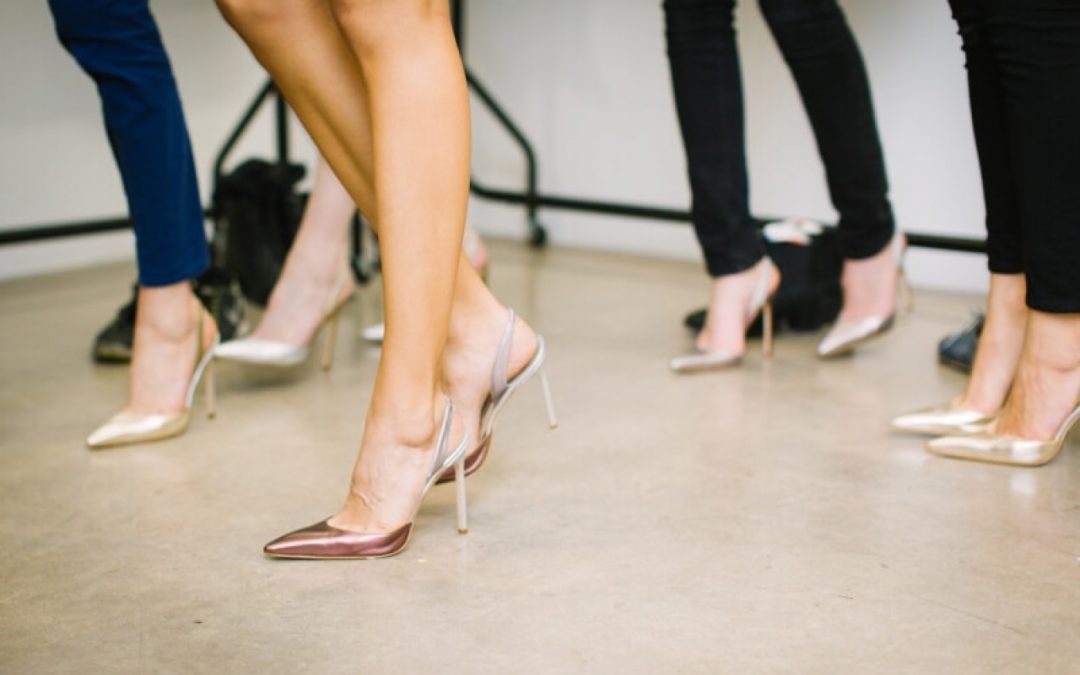Thanks to their ability to make women’s legs look longer, leaner and more toned, high-heeled shoes rarely fall out of fashion. The allure of high heels is so strong that many women continue to wear them despite the fact they can cause discomfort and pain.
When high heels first became popular in Europe, during the late 16th century, they were worn by men and women as symbols of wealth and sophistication. Highly impractical high-heeled shoes were a sign you belonged to the social elite, not the working classes.
The belief in a link between elegance and impractical shoes persists, and high heels are now regarded as the ultimate form of feminine footwear. If a woman wants to add glamour to her outfit, she may well reach for a pair of stilettos, court shoes, wedges or kitten heels.
What’s more, high heels aren’t restricted to special occasions – in a fashion-conscious area such as London, they’re just as likely to be worn at business meetings as red carpet events. Unfortunately, that means women’s feet are under more pressure than ever before.
High Heels Force Your Feet into an Unnatural Position
High-heeled shoes raise the heel of each foot above the level of your toes, accentuating your calf muscles. Because they put your feet in an unnatural position, high heels can compromise your foot health, particularly if they’re worn frequently or for long periods.
When you’re standing or walking in high heels, your toes and the balls of your feet are forced to bear far more weight than is normally the case. The angled shape puts excessive strain on your foot muscles while failing to support your ankles. High heels squeeze your toes together and apply pressure to both the front and back of your feet.
Fashionable Shoes Often Lead to Foot Problems
As high heels cause your feet a great deal of stress, they can lead to many foot problems, such as:
- Blisters
- Bunions
- Calluses and corns
- Deformities, such as hammertoes
- Ingrown toenails
- Muscle fatigue
- Pain in the balls of your feet and heels
- Unsteady gait.
Concerns about the effects of high heels on foot health has led The Society of Chiropodists and Podiatrists (a professional body of which our foot specialists are members) to call on employers in the retail sector to stop forcing women to wear impractical shoes at work.
When Choosing Shoes, How High is Too High?
The higher your heels, the higher your risk of developing foot problems. You can avoid the health issues associated with high heels altogether by wearing flatter shoes instead. If that’s not always possible, lower the risk by selecting heels that are no more than two inches high.
High heels may be fashionable, but it’s vital that your feet don’t suffer in pursuit of style.
Expert Foot Care and Treatment for High-Heel Wearers
If you suspect that high heels are causing or aggravating your foot problems, booking a foot check-up with a podiatrist is an excellent idea.
At our London podiatry clinics, we offer clients expert care and treatment for foot complaints associated with impractical or ill-fitting footwear, ranging from minor issues (such as excess hard skin) to more troubling ones (such as infected sores).
In addition, we can advise you about choosing the best footwear for your needs and prescribe custom-made orthotics, which are specially designed to make your shoes more comfortable and supportive.
Reduce the pain of your footwear with a foot check-up from Feet By Pody. Simply call us on 0207 099 6657 or book your appointment online today.

